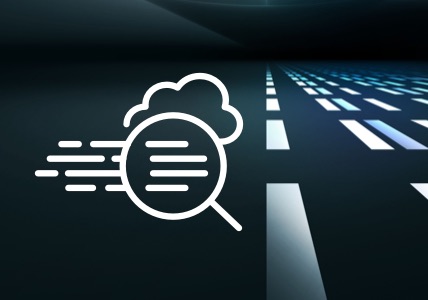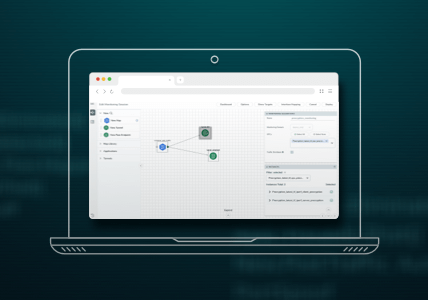Deconstructing the Value of Deep Observability
In today’s digital economy, a highly performant network matters. From the delivery of Software-as-a-Service applications to the facilitation of AI workloads, unfettered access to cloud services for economical scale, and collaboration tools designed to enhance productivity — networks underpin it all. Yet, for too long, business leaders have viewed the network as just another piece of commoditized IT infrastructure rather than the backbone underpinning optimized business outcomes.
Networks serve as the foundation for agility, foster innovation, and can provide a competitive advantage. However, many deployments suffer from poor performance, unnecessary downtime, and a lack of visibility that can cripple business operational efficiency. That’s why observability, specifically deep observability, should be a priority for organizations, both large and small.
Why Any Business Leader Should Care
For many non-technical business leaders, network visibility and observability tools are easily dismissed as an IT concern, but every stakeholder spanning sales, marketing, and operations should be educated about their value, given the impact on the overall customer experience. Existing observability tools relying solely on metrics, events, logs, and traces (MELT) data create dangerous blind spots because they only capture what applications and infrastructure report — not what’s actually happening across the network.
This means threats lurking in East-West traffic, encrypted payloads, and shadow IT can go undetected, making it easy for lateral movement, supply chain attacks, and hidden performance bottlenecks to evade detection. Deep observability, powered by network-derived telemetry, fills these gaps by providing real-time, full-fidelity visibility into every packet, flow, and anomaly — regardless of encryption or blind spots in MELT. Without this level of insight, business leaders face delayed threat detection, operational inefficiencies, and escalating security risks that directly impact revenue, compliance, and business resilience.
But why should one care? It’s a simple answer. Deep observability can help organizations proactively identify potential security threats and performance bottlenecks to optimize application performance — ensuring a seamless customer experience. When business leaders are forced to make decisions based on incomplete data, it leads to grave financial risk. The same applies to poor network visibility, something that can be addressed through deep observability.
The Value of Deep Observability
Customer acquisition and retention is a costly endeavor. Organizations spend large sums of money in demand generation efforts tied to product, software, and service delivery. At the same time, customers have higher expectations and demand a flawless digital experience. If application delivery is slow, unpredictable or unreliable, subscribers will switch providers and expose solution providers to unnecessary churn.
To address customer retention, deep observability can proactively address network and application issues before they impact customers. By giving organizations insight into application behavior and network performance, Gigamon, as a prime example, empowers organizations with the ability to pinpoint issues early and address them quickly and proactively. This assurance capability has the potential to dramatically improve service delivery, and as a result leads to higher retention realized through a deeper understanding of network traffic and application behavior.
Furthermore, speeding time to market and reducing complexity is paramount given today’s hyper-competitive landscape. Being able to quickly develop, test, and deploy new software and cloud-based services can be the difference between being an industry leader or laggard. As enterprises continue to embrace hybrid and multi-cloud for scale and cost considerations, disaggregated networking and security infrastructure also present complexity and risk. Tool sprawl, inefficient data flows, and misconfigurations compound challenges for IT staff.
Deep observability is valuable in addressing these challenges, given it simplifies operations and optimizes resources. To this end, Gigamon provides a unified view across on-premises, private and public cloud, and container environments, enabling seamless monitoring and operational management. Gigamon also filters and optimizes the data sent to monitoring tools, potentially reducing licensing costs and operational overhead. Additional value is realized through improved security posture, stronger compliance controls, and fewer operational disruptions.
Evaluating Observability Market Players
The observability market is becoming increasingly crowded with solution providers claiming similar capabilities. Whitewashing abounds, and the challenge for business leaders is choosing the right partner, one that offers deep observability and actionable insights. I’ve written about this subject on numerous occasions, highlighting companies that include Cisco and Splunk (prior to that mega-acquisition) and Gigamon.
Gigamon continues to stand out as a leading deep observability solution provider, given its ability to integrate deep observability into the network layer, providing intelligence that other solutions often miss. To reiterate a prior point, existing observability tools focus on log and trace data. In the absence of network-level visibility, blind spots often materialize that lead to very costly inefficiencies and security issues.
The Future of Business Efficiency Is Rooted in Deep Observability
Modern AI, in the form of generative and agentic applications, will continue to enhance applications, workloads, and use cases. However, modern AI brings with it a new set of challenges given the use of enormous data sets, real-time analytics requirements, and AI-driven applications and underlying large language models that require ultra-low latency and high-bandwidth connectivity. Traditional approaches to networking architectures and deployment scenarios aren’t designed to support the scale and complexity required. What is needed is the telemetry pipeline to enable deep observability.
Consequently, deep observability is quickly becoming an essential component of needed network transformation. As AI-driven workloads process massive amounts of data across distributed architectures and domains, visibility into every layer of network traffic, whether on-premises, in the cloud, or in hybrid environments, is critical. Organizations that fail to adopt deep observability risk losing control over newly minted and costly AI infrastructure. In contrast, those that prioritize the deployment of deep observability from the likes of Gigamon stand to thrive in the modern AI-driven era.
Featured Webinars
Hear from our experts on the latest trends and best practices to optimize your network visibility and analysis.

CONTINUE THE DISCUSSION
People are talking about this in the Gigamon Community’s Security group.
Share your thoughts today








